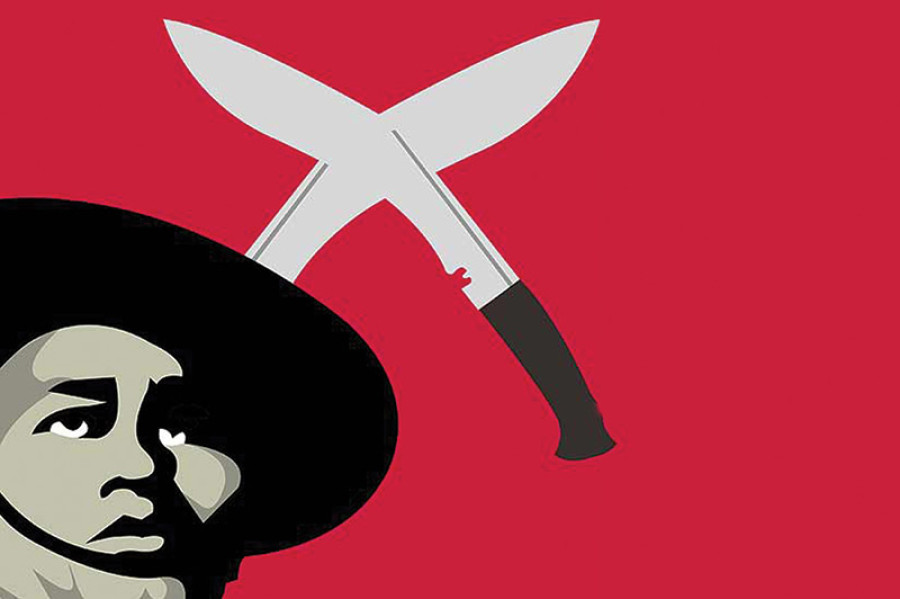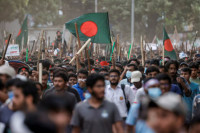Opinion
The 1950 treaty
The Treaty of Peace and Friendship signed between Nepal and India in 1950 is a major issue of contention behind the ongoing Gorkhaland movement in Darjeeling.
Mahendra P Lama
The Treaty of Peace and Friendship signed between Nepal and India in 1950 is a major issue of contention behind the ongoing Gorkhaland movement in Darjeeling. This treaty has had adverse effects on Indian Gorkhas across various states of India. Though the Indian Gorkhas—true and tested patriots—have upheld this treaty, they want exclusive and durable protection that only a separate state can provide. For the Indian Gorkhas, this treaty is a bilateral arrangement between two sovereign nations that has had negative effects on their Indian political identity and nationality. Articles VI and VII of the treaty bestow a similar status on nationals of each country and treat the movement of each other’s nationals into each other’s territory in the same manner.
The Nepali nationals coming to India through the open border under this treaty unintentionally diluted the Indian identity and nationality of Gorkhas in India because of similar cultures, ethnicities and language. Indian policy makers, governance actors and the people at large did not maintain a distinction between the two groups—they put both the Nepali nationals and Indian Gorkhas in the same basket of “people from Nepal”. The Indian Gorkha’s experience of discrimination has become all the more bitter and blatant because they still do not have their own state, in contrast to the Bengalis, Nagas, Assamese, Mizos, Tamils, Kannadigas, Marathis, Gujaratis and many others who do have their own states created on the basis of language, ethnicity and history.
Long struggle
This issue was at the heart of the Gorkhaland movement of the 1980s in Darjeeling. In his hard-hitting statement entitled “The Fate of the Indian Gorkhas is Burning” issued on May 14, 1983, Subash Ghising, the leader of the Gorkha National Liberation Front (GNLF), demanded the abrogation of Article 7 of the 1950 treaty. His memorandum to king Birendra mentioned it was “in protest against the savage and hypocritical treaty of 1950, which has seriously damaged the fate and fortune of the whole Indian Gorkhas; as the treaty has totally failed to keep the separate identities of the Indian Gorkhas and it has mixed up the citizens of Nepal and the Indian Gorkhas in a single big basket of illusion, and it has further clearly pointed out the whole Indian Gorkhas and the Nepal citizens as foreigners or immigrant, in the soil of Indian territory”.
However, the Tripartite Agreement between the Central Government, the West Bengal Government and the GNLF leading to the establishment of the Darjeeling Gorkha Hill Council in 1988 did not provide a durable solution to this critical issue. A separate gazette notification by the government of India dated August 23, 1988 added a clarification on the provision of citizenship for every Gorkha who had his domicile in the territory of India on the commencement of the constitution, ie from January 26, 1950. However, this also did not provide any specific protection to the Indian Gorkhas.
In 1992, the Nepali language was recognised in the Eighth Schedule of the constitution of India after four decades of long struggle by the Indian Gorkhas. They continue to fight for a separate state for various other reasons, among which blatant discrimination and destruction of history by the West Bengal government has been a driving factor.
Scattered and homeless
During the violent anti-foreigners agitation by the All Assam Students Union in the 1980s, a large number of Indian Gorkhas who had been born and were living in Assam for decades were killed. Their houses were burnt down and many were chased away alongside Nepali nationals who had settled there following the 1950 treaty. In fact, in undivided Assam, the Indian Gorkhas used to be one of the most politically vocal conglomerates. Similar violent incidents occurred, uprooting thousands of Indian Gorkhas overnight in Meghalaya in the late 1970s and mid-1980s. ‘Foreign nationals’ like the Bengalis were given shelter, livelihood and settlement space by West Bengal. Others who were displaced and dispossessed—like the Biharis—were absorbed by their own state. Nepali nationals went back to their villages in Nepal. But the Indian Gorkhas did not have a state to go back to and remained scattered and homeless. If there was no West Bengal state, the Indian Bengalis would have witnessed the same identity crisis amidst the estimated over 20 million ‘illegal and non-reciprocal’ immigrants from Bangladesh.
Several appeals were made by the affected people and by the political parties of Indian Gorkhas but no action was taken. They were permanently uprooted and ousted from these states. Today this phenomenon is institutionalised in many parts of the North East region. In the Kokrajhar district of Assam, Indian Gorkhas were victims of an ethnic cleansing campaign by the Bodos.
Assertions of Indian identity are found in an array of political, social and cultural actions undertaken by India’s Gorkha community. The GNLF also demanded an exclusive Gorkha regiment for the Indian Gorkhas when a telegram sent to the then Indian prime minister Rajiv Gandhi, on January 15, 1987, stated that “we have no other alternative but to ask the whole settled Indian Gorkhas not to join the ‘Agreement Troops’ of Gorkha Rifles. Furthermore, we are compelled to ask the central Government of India to immediately establish a New and Separate India Gorkha Regiment so as to save the whole settled Gorkhas from unnecessary and permanent stigma and allegation of Foreigners, Mercenaries, Reciprocal people and Nepal subjects.”
Demographic imbalance
The 10-12 million Indian Gorkhas living in various parts of India have been demanding the abrogation of this treaty or special provisions to protect them. They even burnt the 1950 Peace and Friendship Treaty during the violent Gorkhaland movement in July 1987.
Though the contribution of Indian Gorkhas in the fight against British imperialism had been singular, the tendency of mainstream historians has been to distort the image of these disciplined forces by showing them only as stooges of the British government. When Morarji Desai, the then Indian prime minister, described Nepali as a foreign language to the delegation of the All India Nepali Bhasha Samiti (AINBS) on September 29, 1977, it only confirmed the feeling that even highly placed political leaders are not able to distinguish between Indian Gorkhas and Nepali nationals.
The Gorkhas have increasingly felt that unless they have a state of their own in India, their traditions, identity and contributions to the Indian nation-building process will be in vain. GNLF’s telegram to Mrs Indira Gandhi in 1980 said:
“This is the second time we remind you that we the Indian Gorkhas after independence are stateless and futureless all over India. Our future was murdered by the Indian Constitution when our land and territory was wrongly and blindly merged with West Bengal in 1956. It was a great mistake of the then Indian Government. As a result of it Indian Gorkhas were politically tortured all over India. Now please correct the mistake of the then Indian Government and return our land and territory from West Bengal. Under no circumstances we can remain in West Bengal. We want our own Gorkhaland…Gorkhas are always loyal to the nation and always salute your leadership.”
The Indian Gorkhas live in constant fear, isolation, and deprivation. In West Bengal, the demographic imbalance silently yet steadily injected by the authorities and political parties in Dooars and Siliguri is primarily aimed at displacing the Indian Gorkhas and the hill people and making them a minority voice in a constricted geography.
Indian Prime Minister Narendra Modi’s willingness to review and revise this treaty as expressed during his visit to Nepal in August 2014 has once again provided an opportunity for the Indian Gorkhas to reassert and reposition their identity vis-à-vis the population from Nepal.
Lama, a senior professor at Jawaharlal Nehru University, is a member of the Eminent Persons Group from India




 12.99°C Kathmandu
12.99°C Kathmandu










%20(1).jpg&w=300&height=200)

